Posts Tagged: cuckoo bee
Ever Seen a Cuckoo Bee?
Ever seen a cuckoo bee? They're also called parasitic bees or "kleptoparasites" or "cleptoparasitises." They cannot carry pollen (no...
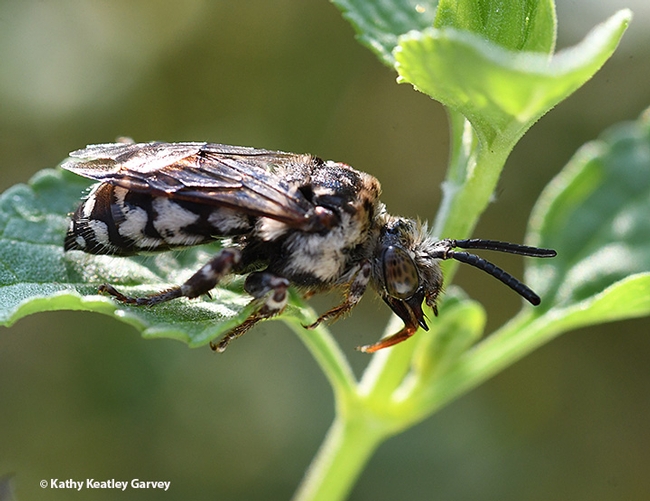
A cuckoo bee, Xeromelecta californica, rests on a leaf in a Vacaville pollinator garden. (Photo by Kathy Keatley Garvey)
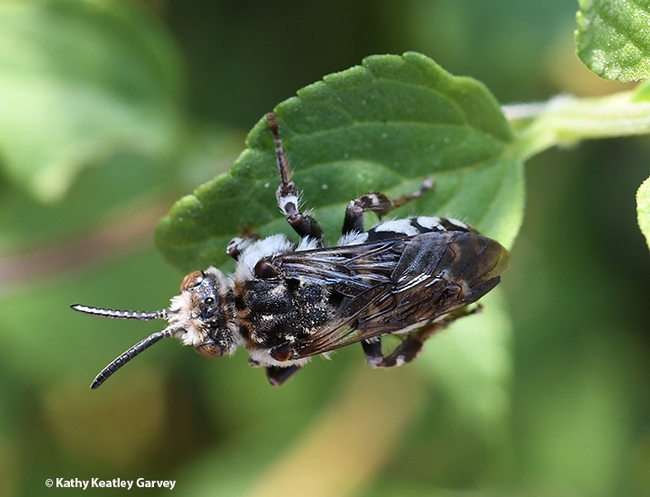
Dorsal view of the cuckoo bee, Xeromelecta californica, in a Vacaville pollinator garden. It flew just after this image was made. (Photo by Kathy Keatley Garvey)
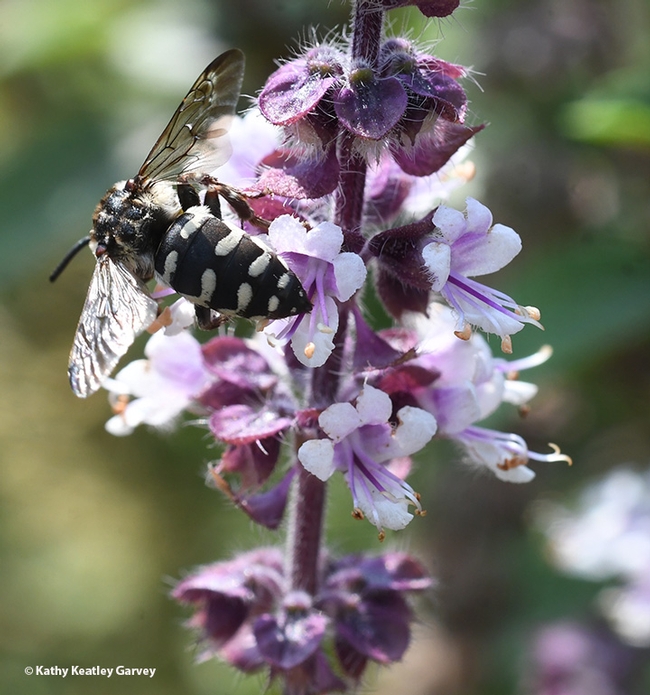
The cuckoo bee, Xeromelecta californica, sipping some nectar. (Photo by Kathy Keatley Garvey)
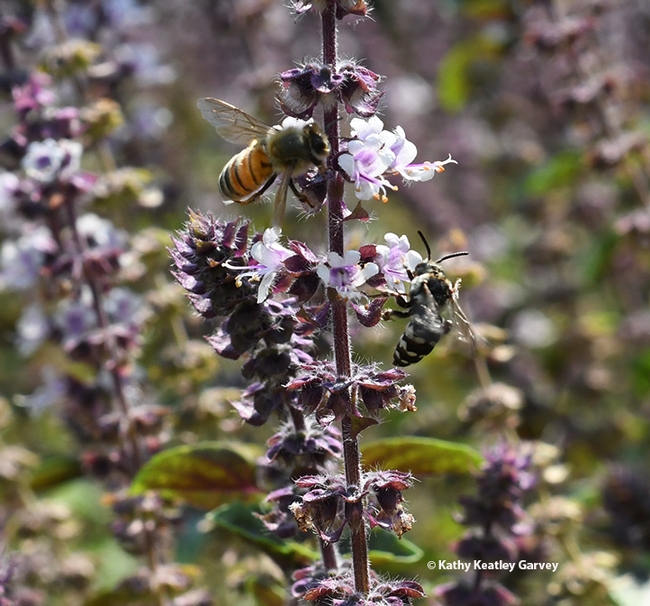
A honey bee, Apis mellifera, and a cuckoo bee, Xeromelecta californica, sharing African blue basil blossoms. (Photo by Kathy Keatley Garvey)
The Sneaky Cuckoo Bee
You could call it a slacker, a deadbeat, a moocher, a sponger, or a loafer. Or you could call it a cuckoo bee. Take the cuckoo bee, Xeromelecta...
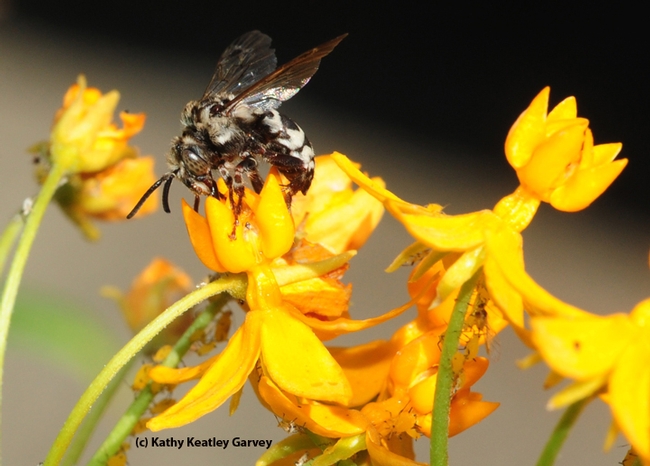
A cuckoo bee, Xeromelecta californica, sips nectar from a tropical milkweed, Asclepias curassavica, in Vacaville, Calif. (Photo by Kathy Keatley Garvey)
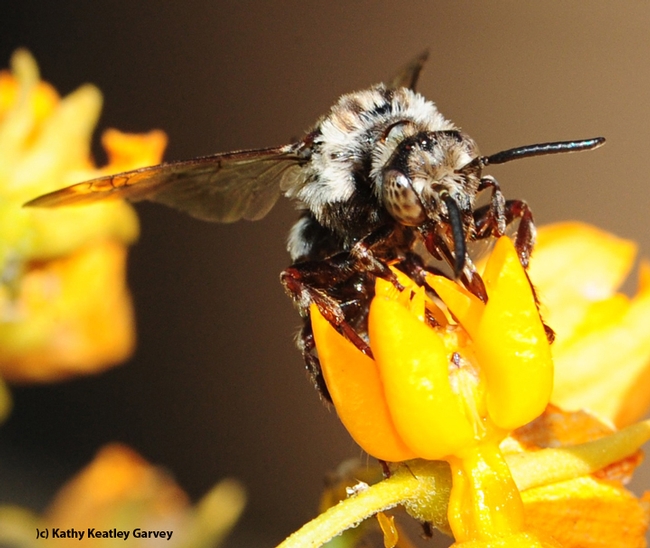
Close-up of a cuckoo bee, Xeromelecta californica, on a tropical milkweed, Asclepias curassavica. (Photo by Kathy Keatley Garvey)
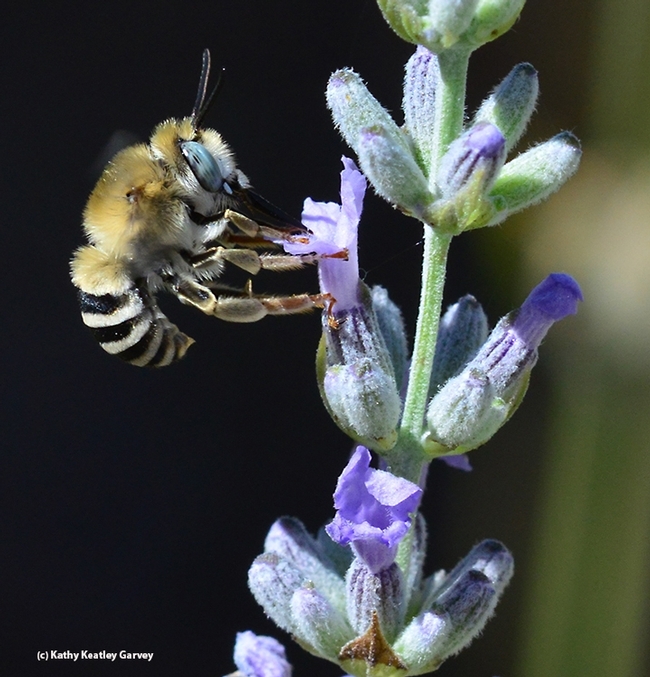
A digger bee, Anthophora urbana, sips nectar from lavender. The cuckoo bee, Xeromelecta californica, is a parasite of Anthophora. It lays eggs in the host's nest, resulting in death of the host's offspring. (Photo by Kathy Keatley Garvey)
Why This Is Bee Is Cuckoo
When you visit the half-acre Häagen-Dazs Honey Bee Haven, a bee friendly garden on Bee Biology Road at the University of California,...

A male cuckoo bee, Triepeolus concavus, on a blanket flower (Gaillardia). (Photo by Kathy Keatley Garvey)

Male cuckoo bee sipping nectar. (Photo by Kathy Keatley Garvey)
Just bee-cause
It's National Pollinator Week. Have you hugged your pollinators today, particularly the bees?
If you don't pay attention to the bees around you, you may think that every floral visitor is a honey bee (Apis mellifera) or a bumble bee (Bombus).
Not!
If you look closely, you'll see bee diversity: leafcutter bees, green metallic sweat bees, cuckoo bees, long-horned bees, carpenter bees, and squash bees, just to name a few.
Native pollinator specialist Robbin Thorp, UC Davis emeritus professor of entomology, has detected 80 different species of bees - and counting - in the Häagen-Dazs Honey Bee Haven on Bee Biology Road at UC Davis. The half-acre garden, planted in the fall of 2009, is located next to the Harry H. Laidlaw Jr. Honey Bee Research Facility. It's intended to be a year-around food source for the Laidlaw bees and other pollinators, to raise public awareness about the plight of bees, and to demonstrate what you can plant in your own garden.
"Of about 4,000 bee species known in the entire United States, about 1,600 have been recorded in California," according to Gordon Frankie of UC Berkeley, Robbin Thorp and their colleagues, in a must-read article in California Agriculture.
They point out: "...many types of urban residential gardens provide floral and nesting resources for the reproduction and survival of bees, especially a diversity of native bees. Habitat gardening for bees, using targeted ornamental plants, can predictably increase bee diversity and abundance, and provide clear pollination benefits."
Be sure to check out UC Berkeley's Urban Bee Gardens website that's described as "a practical guide to introducing the world’s most prolific pollinators into your garden." It's an educational treasure.
Bottom line: It's good to bee-aware, especially when research studies show that our pollinator population is declining worldwide.

A male cuckoo bee, Triepeolus concavus, the cuckoo that is a cleptoparasite on Svastra, according to Robbin Thorp. (Photo by Kathy Keatley Garvey)

Female metallic green sweat bee, Agapostemon texanus. (Photo by Kathy Keatley Garvey)

A male leafcutting bee, Megachile sp., on rock purslane. (Photo by Kathy Keatley Garvey)

A male long-horned bee, Melissodes communis, on salvia. (Photo by Kathy Keatley Garvey)

A male Valley carpenter bee, Xylocopa varipuncta. (Photo by Kathy Keatley Garvey)

Male squash bee, Peponapis pruinosa. (Photo by Kathy Keatley Garvey)
Seeing Red
It’s triple-digit hot and you’re relaxing in a swimming pool when suddenly you realize you have company. A knat-sized insect with a red abdomen...

Sweat bee

